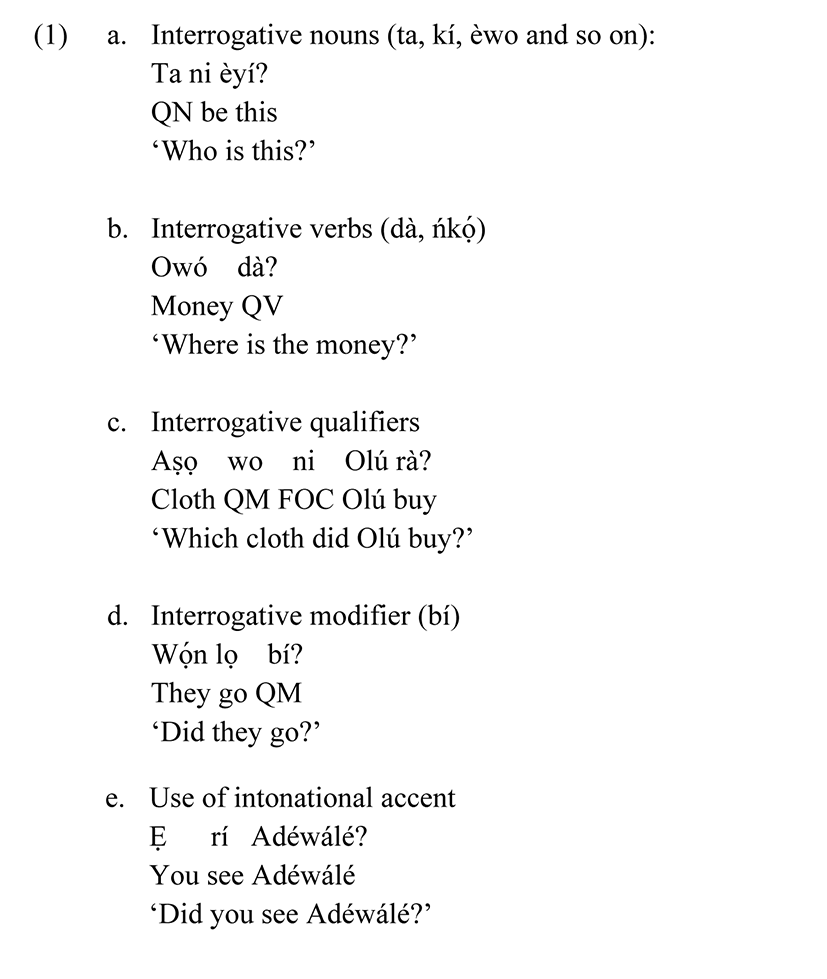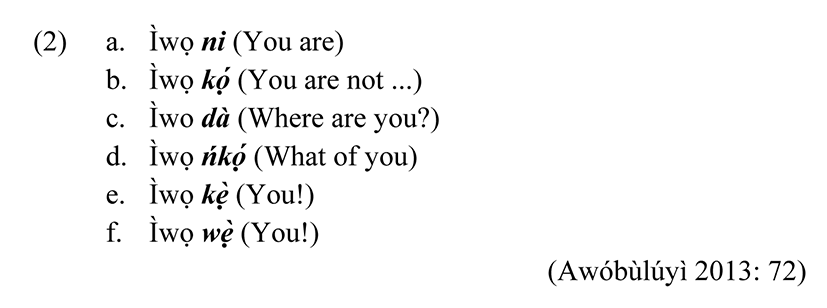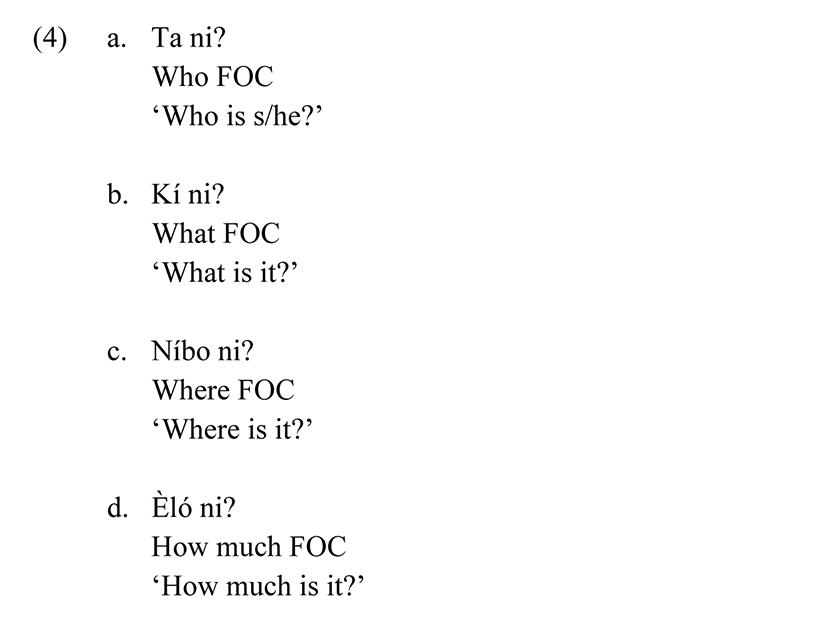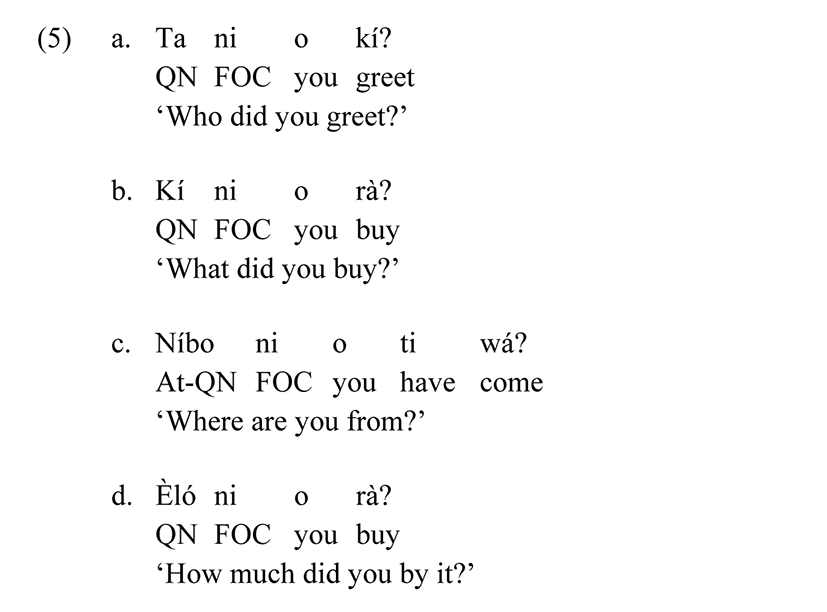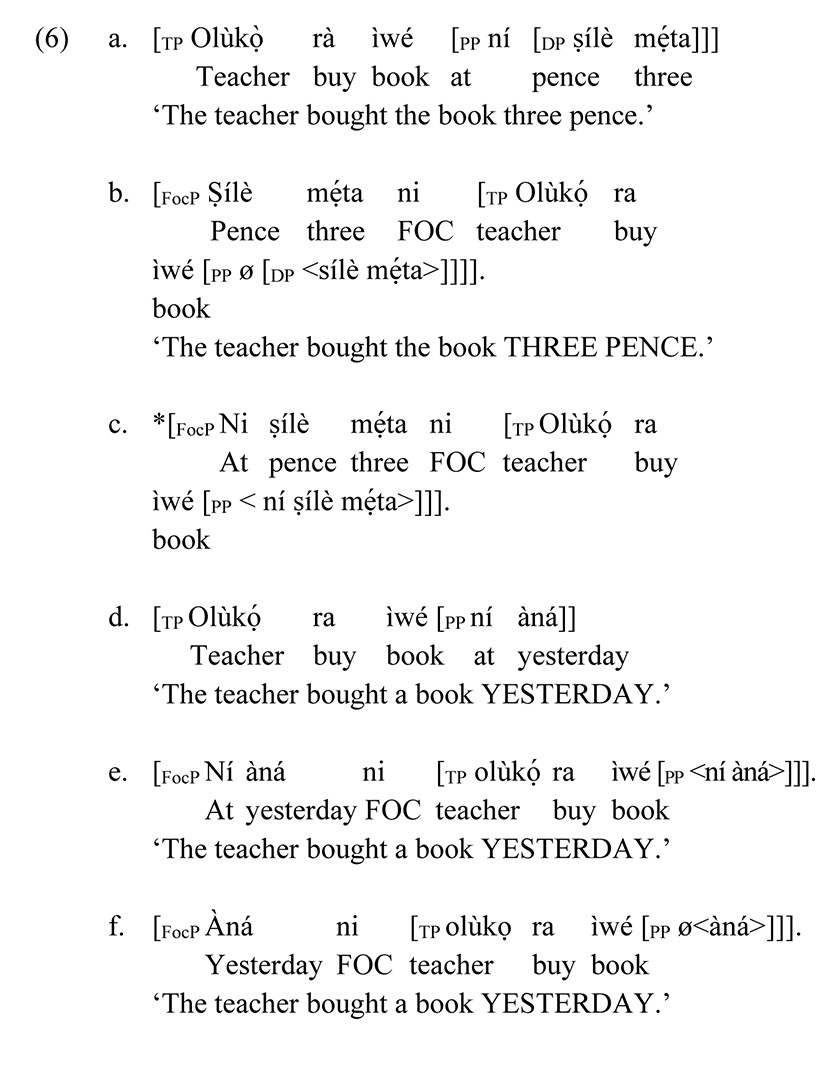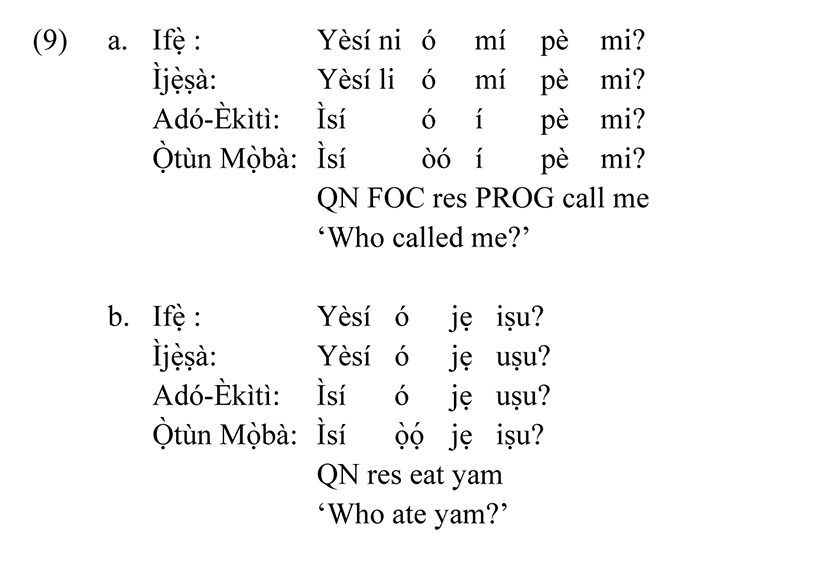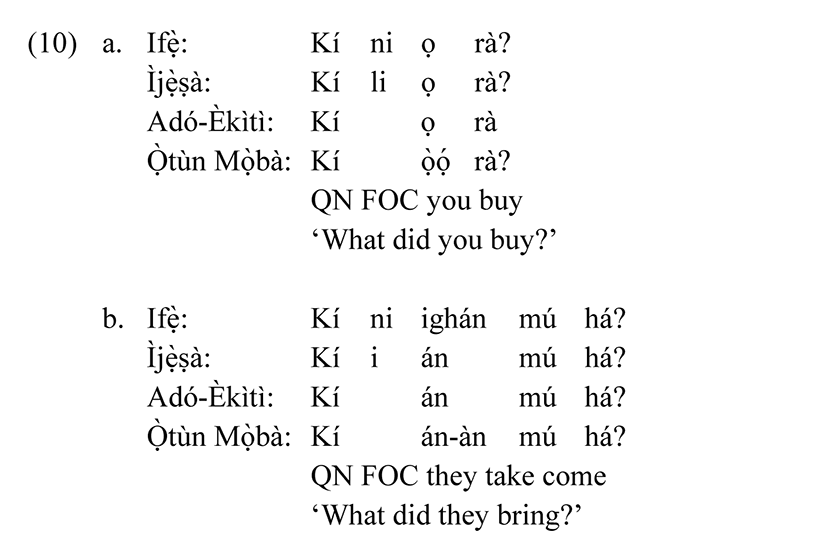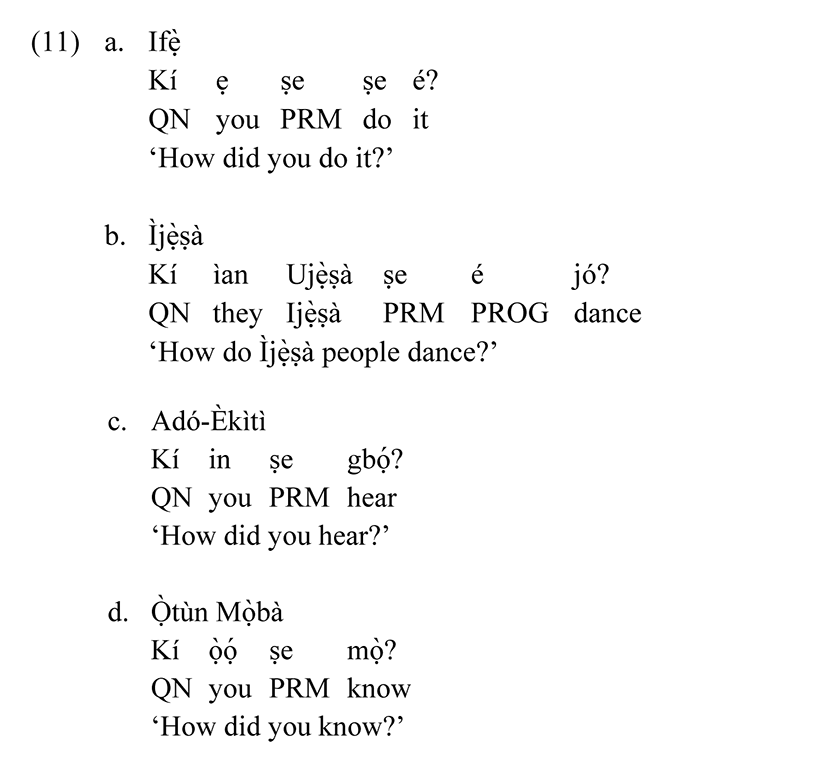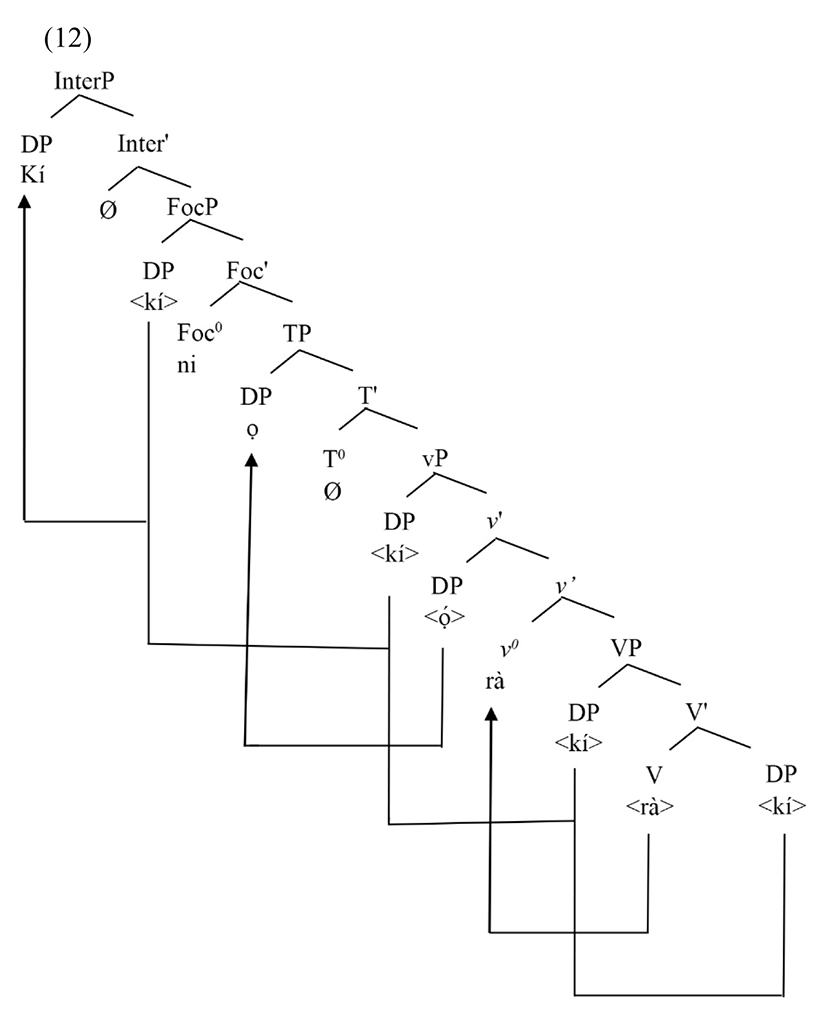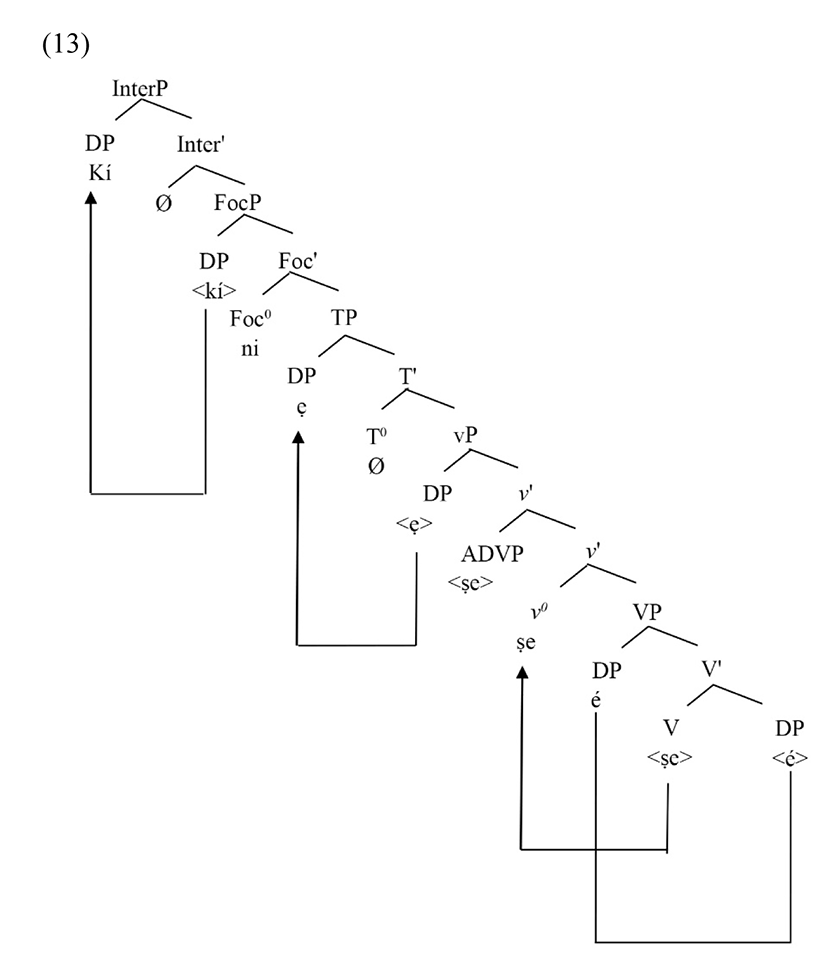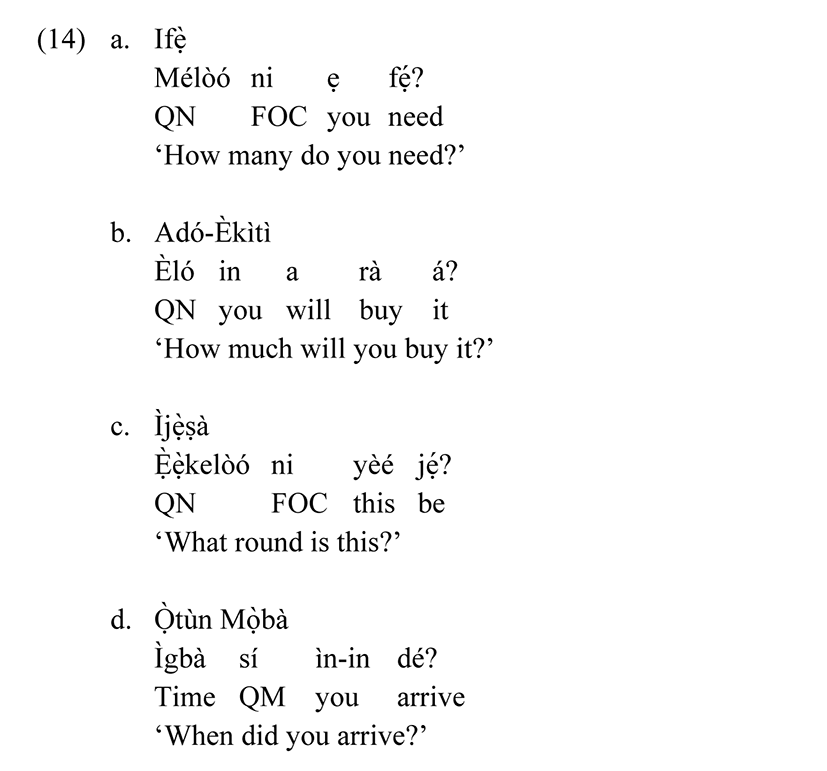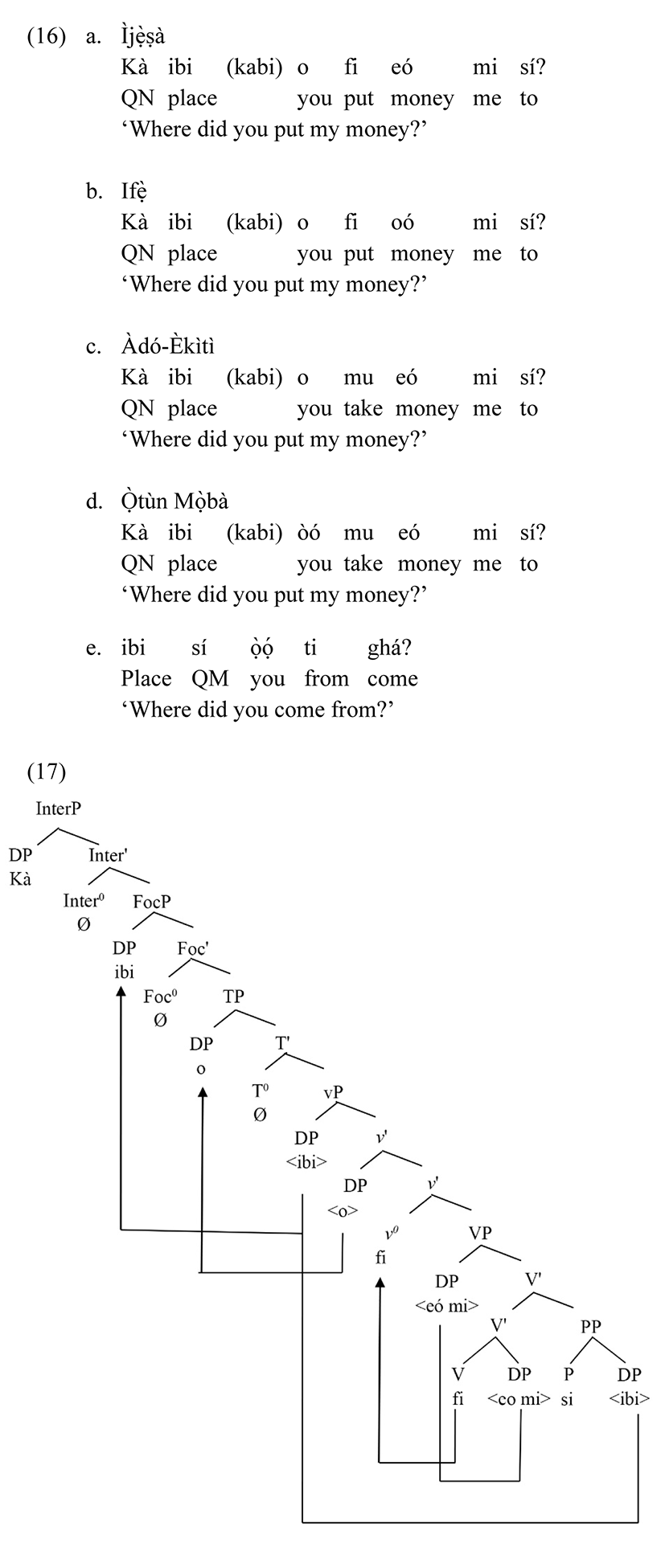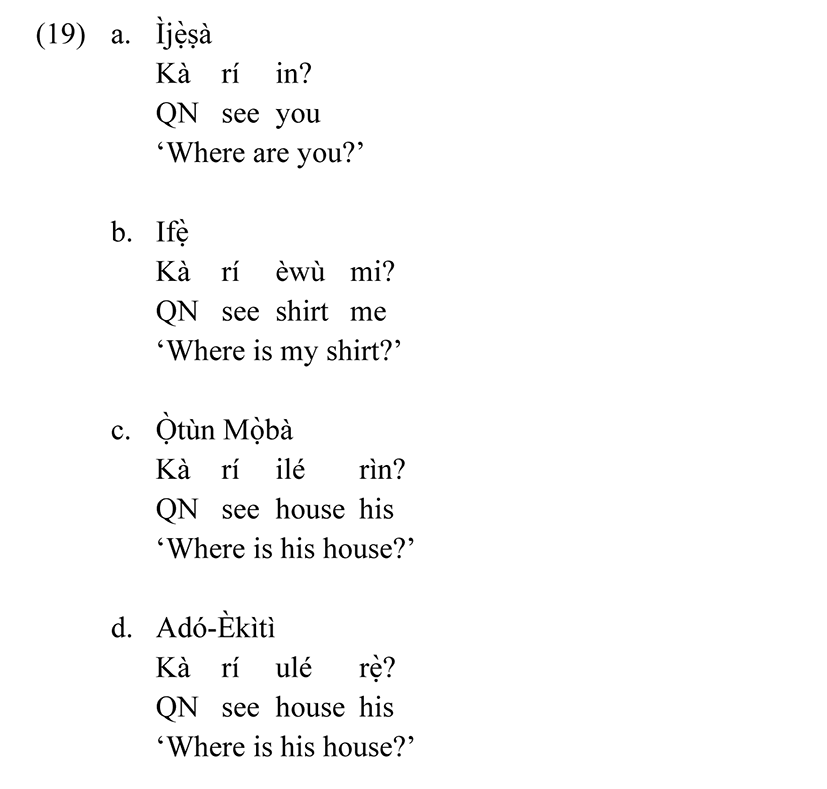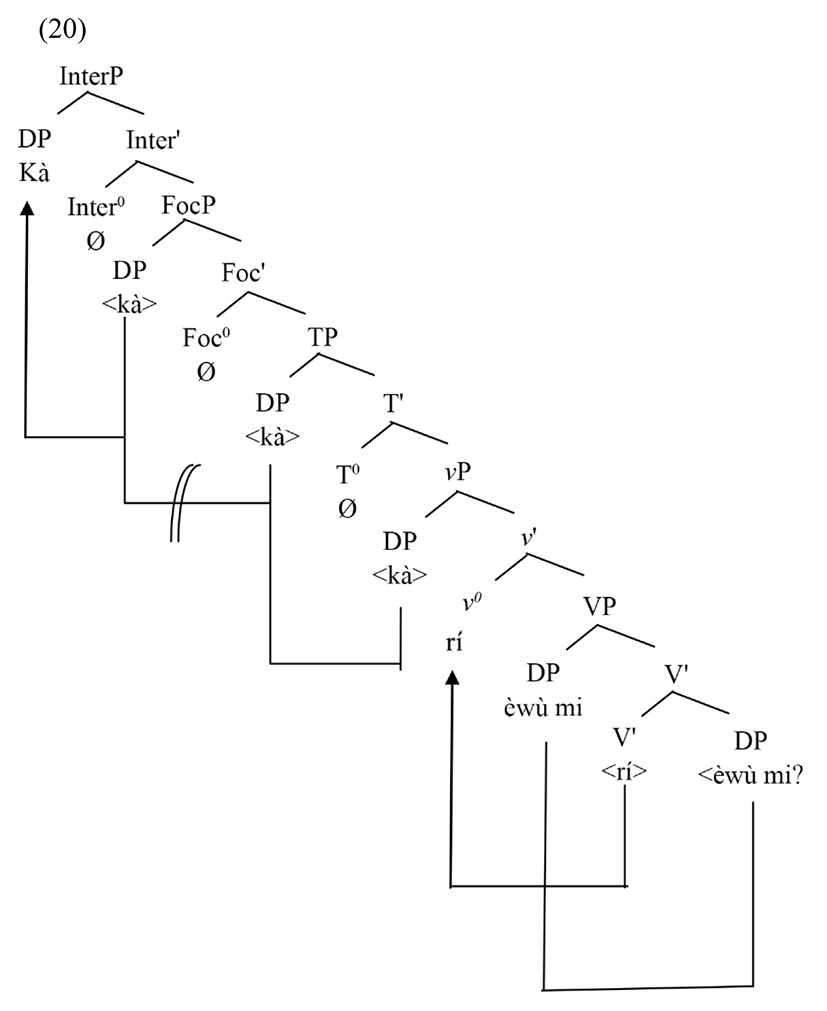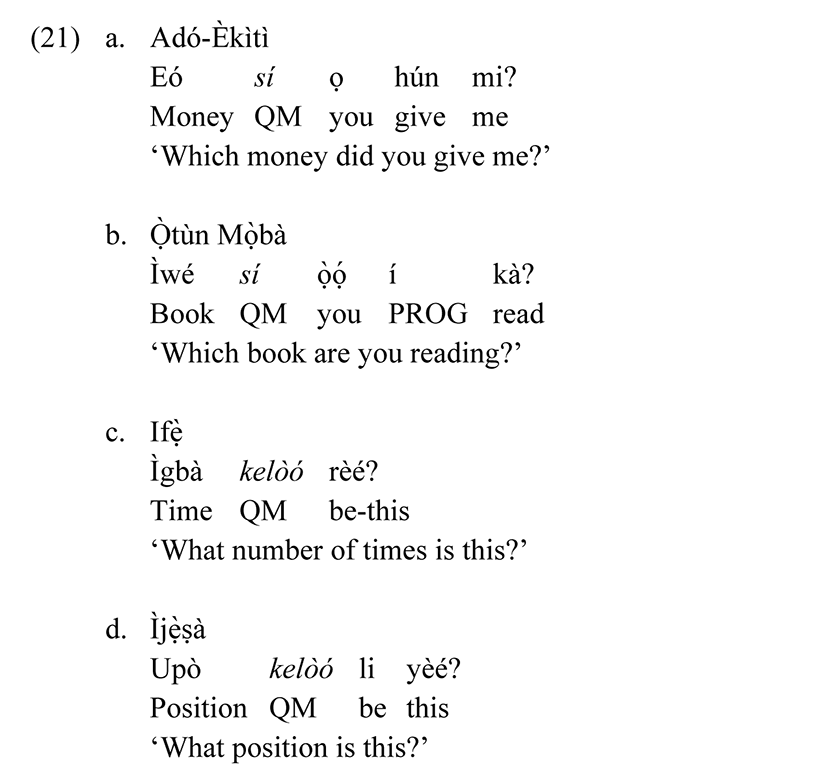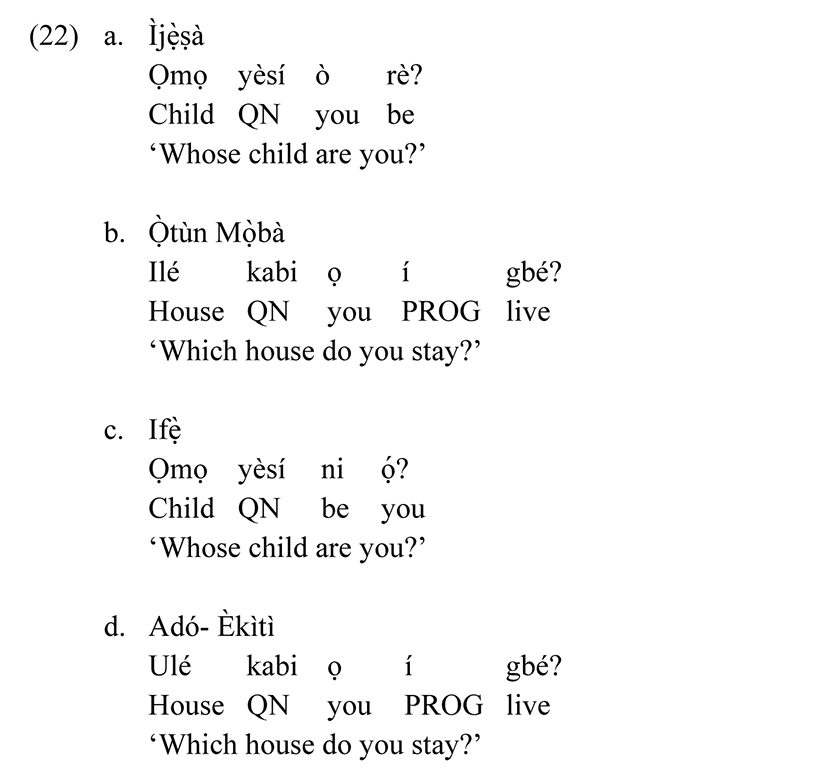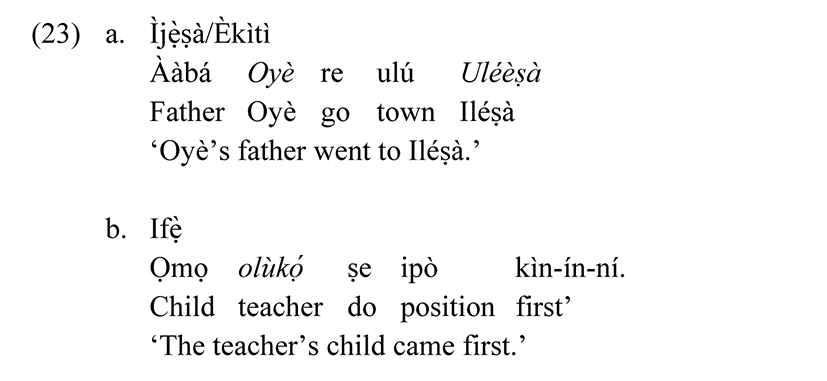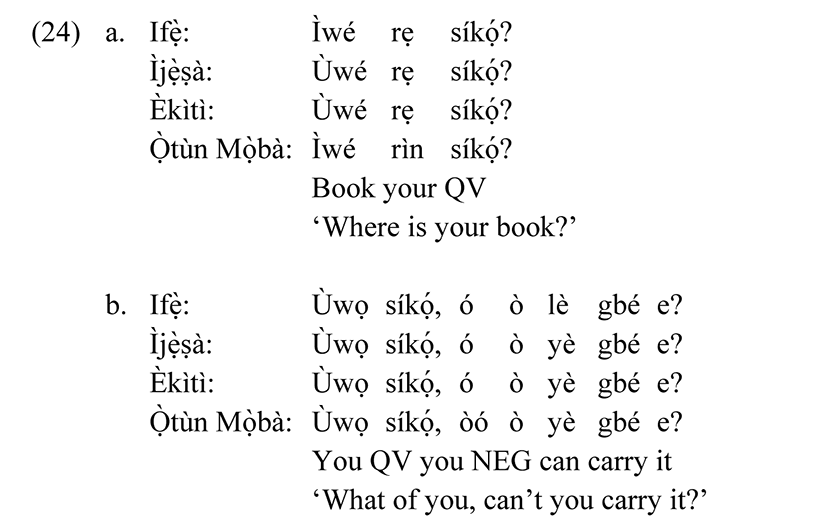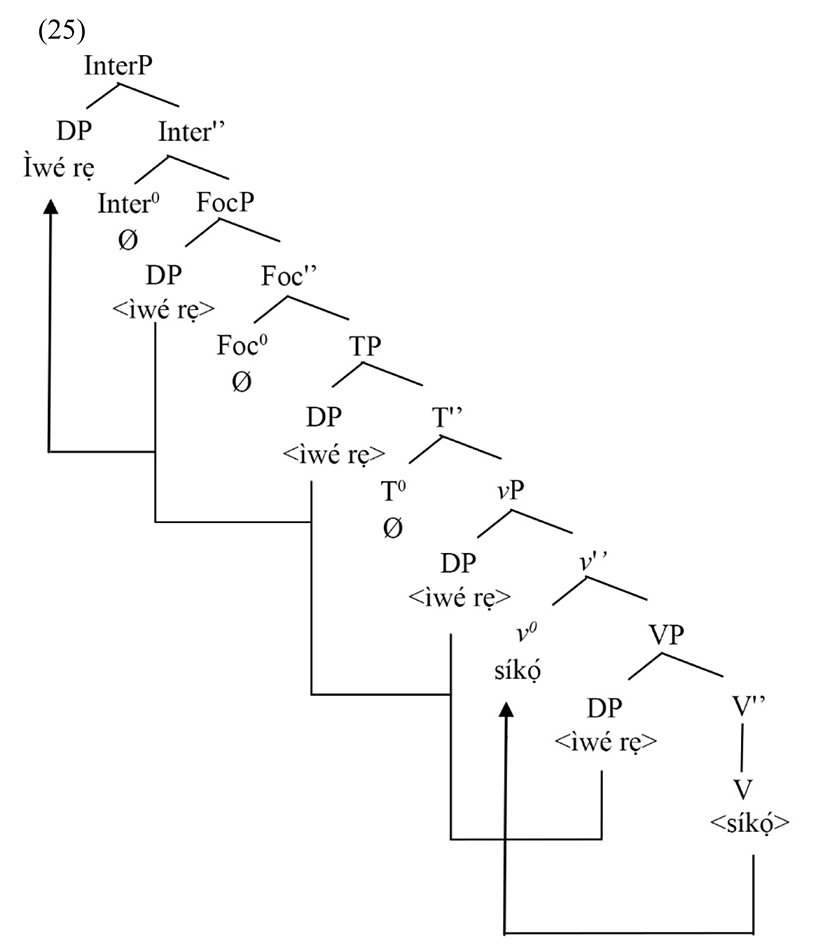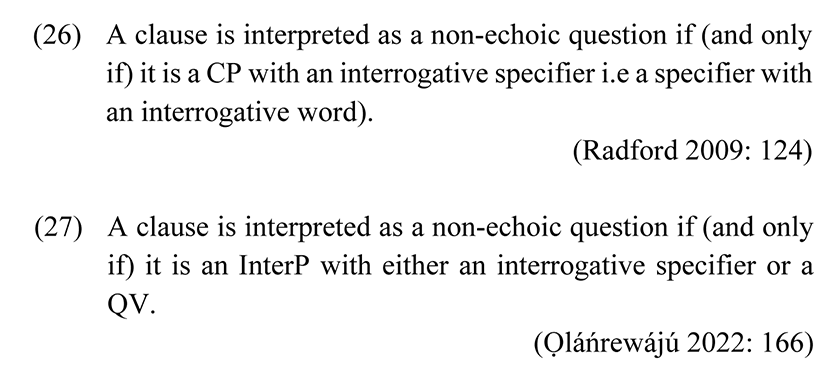1. Introduction
Yorùbá dialects, unlike standard Yorùbá, began to attract the interest of language scholars in the last two decades. Therefore, adequate attention is still needed to be paid to research studies of these dialects. This prompted Awóbùlúyì (1998) to call the attention of Yorùbá scholars to take advantage of exploring Yorùbá dialects. Olúmúyìwá (2006) also remarks that any endeavour in line with Awóbùlúyì’s appeal above will invariably have immediate and long-term benefits for Yorùbá studies, especially on things that these dialects can teach us about the structure of standard Yorùbá. A considerable amount of research works have been carried out on the delimitation of Yorùbá dialects; Among these are Akinkugbe (1976), Oyèláràn (1976), Adetugbo (1982), Awóbùlúyì (1998) and Adéníyì & Òjó (2005). These aforementioned works use linguistic features like vowel phonemes, consonant phonemes, pronominal system and so on to delimit Yorùbá dialects. According to Awóbùlúyì (1998), CY1 dialects comprise Ifẹ̀, Ìjẹ̀ṣà, Èkìtì and Mọ̀bà.
Interrogatives are concerned with requesting for pieces of information. König & Siemund (2007) and Issah (2013: 4) opine that, based on syntactic and semantic properties, interrogatives across world languages can be classified into constituent and polar questions. Issah (2013) claims that interrogatives constitute ‘a linguistic device for the identification of a piece of information considered to be prominently new’. According to Kroeger (2004) in Issah (2013: 56), a question word bears pragmatic focus because it specifies the crucial piece of new information required. Aboh (2007) claims that focused interrogative words and their non-focused counterparts have different formal licensing and information structures of answers. To him, focus constituents and wh-phrases are closely related for the fact that they interact in question and answer pairs, and they are mutually exclusive in many languages. According to Ouhalla (1996), wh-questions in natural languages differ with respect to their morphological and semantic properties. In line with this, QNs in standard Yorùbá and CY dialects exhibit some ontological differences with English and some other languages. Unlike English wh-phrases, QNs are never used except in question formation (Ọláńrewájú & Taiwo 2020, 2021; Ọláńrewájú 2022). There are four sections in this paper: Section 1 is the general introduction. Section 2 passes remarks on some extant works on interrogatives in Yorùbá. Section 3 discusses strategies for forming constituent interrogatives in CY dialects while Section 4 provides conclusive remarks.
2. Previous Works on Interrogatives in Yorùbá
Awóbùlúyì (1978) classifies question forms in Yorùbá into two: content word questions and non-content word questions, and he identifies five ways of forming both: interrogative nouns, interrogative verbs, interrogative qualifiers, interrogative modifiers and intonational accent with great loudness or pitch rising (Ọláńrewájú 2017). Each of these methods is depicted in the examples below:
According to Bamgbose (1990: 183–186), the following items are operated to form questions in Yorùbá: interrogative nouns, interrogative verbs, question particles, interrogative conjunctions, interrogative modifiers, interrogative qualifiers and preverbal QMs.
Awóbùlúyì (2013) disregards dà and ńkọ́ as QVs in Yorùbá and refers to them as (interrogative) qualifiers. His arguments are based on the distributional restriction placed on these items. According to him, dà and ńkọ́ are classified alongside kọ́, ni, kẹ̀ and wẹ̀ as shown in (2) below:
A cursory look at (3) below evidently reveals that the boldly written items are not qualifiers, they have different grammatical functions in (2) above.
The question begging for explanatory adequacy on (3) above is ‘what are the italicised items qualifying?’ Therefore, for more plausible grammar, all environments where all these items occur must be surveyed and discussed before we can determine either their grammatical functions or their categorial status. It should be equally noted that only examples (2c) and (2d) above are predicate clauses (Taiwo & Abimbola 2014, Ọláńrewájú 2022). Ajíbóyè (2006: 32) identifies the following as examples of in-situ content word questions in Yorùbá.
A cusory look at the examples above reveals that they are truncated forms unlike (5) below.
The preposition ni is not pied-piped with the QN, but gets deleted in (5d) above. It is assumed that the reason behind this irregularity is that èló “how much” is used to elicit information about price. This is not peculiar to èlo as a QN alone, it is also applicable to other nouns in this category. Let us consider the examples below:
As evident in (6e) and (6f) above, the preposition ni is optionally deleted or pied-piped with the DP àná “yesterday” to the clause left periphery unlike (6b) and (6c) above. The derivation in (6c) crashes because the preposition ní is pied-piped with the moved DP. The conclusion borne out of this is that what Ajíbóyè (2006) refers to as in-situ content word questions in (4b) repeated as (7a) below, for ease of reference, is an elliptical form. The QN kí is not base-generated at the object position in (7a) unlike (7b) below, adapted from Àkanbi (2016: 418).
Within minimalist assumption, the QN kíin (7b) takes LF movement from the spec VP to the spec InterP as shown in (8) below:
The derivation in (8) goes thus: The verb jẹ ‘eat’ first merges with the QN kí ‘what’ to project the V-bar, and hence, satisfies the c-selection requirement of the verb. The same QN kí is copied to the spec VP to have its [+case] feature checked through the specifier and head agreement. The null performative light verb v0 merges with the VP to project the v-bar. The strong vF on the light v0 attracts the lexical verb jẹ to adjoin to itself while the subject DP, Adé is externally merged at the inner spec vP in line with the PISH which requires a subject of a sentence to be base-generated within the predicate. The derivation proceeds by externally merging the abstract T0 with the outer vP to project the T-bar. The T0 as a probe searches its c-command domain for the DP Adé, a matching goal and attracts it to the spec TP where it checks its [+case, EPP] feature. The derivation still proceeds by merging the null head Inter0 with the TP to project the Inter-bar. The QN kí takes an LF movement to the spec InterP to check the [+Q, EF] on the Inter0 through specifier and head agreement. The derivation in (8) above is an echoed question. Therefore, it does trigger any response from an interlocutor. FocP is not activated because the QN kí ‘what’ is not focused. Foc0 is specified [+strong] in Yorùbá, unlike Inter0. Consequent on this, the Inter0 cannot trigger the syntactic movement of the QN to the clause left periphery.
3. Formation of Constituent Interrogatives in CY Dialects
Content word questions in CY dialects are formed using QNs, QVs and interrogative modifiers.
QNs in CY are shown in Table 1 (Ọláńrewájú 2022: 131):
In Table 1, ibi sí ‘where’ and igbà sí ‘when’ are QPs. The QM (interrogative qualifier), sí, in each of the phrases has its interrogative feature percolated through the entire phrase (Ajíbóyè 2005, Ọláńrewájú & Táíwò 2020). Now, let us consider how these QNs are operated in CY dialects.
CY dialects also optionally drop FOC as shown in (9) above. QNs are extracted from the subject positions to the clause left periphery to check the [+Focus] and the [+Q, EF] on the Foc-head and the Inter0.
As shown on Table 1, CY dialects use kí to question after two things: non-human referents and manner (how). Let us consider how kí is used to elicit information about non-human referents before we return to discussing how it is operated to question manner.
Èkìtì and Mọ̀bà drop the FOC as shown in (10) above. The QN, object DP is extracted to the clause left periphery from the vP domain in each of the examples. Now, let us consider the usage of kí (how) in the questioning manner in CY dialects.
In (11) above, the QN kí enters the derivation at the clause left periphery. The tree diagram in (12) and (13) elucidate more on how kíis used for non-human referents (what) and manner (how) respectively.
In (12) above, the QN originates from the vP domain. The derivation goes thus: The lexical verb rà ‘buy’ merges with kí ‘what’ to project the v-bar ra kí ‘buy what’ in line with c-selection requirement of the verb (V0). The second person singular subject pronoun ọ ‘you’ is copied to the spec VP to have its [+case] feature checked. The derivation proceeds by merging the null performative light verb with the VP to project the v-bar. The strong vF on the light v0 attracts the lexical verb rà ‘buy’ to adjoin to itself. The second person singular subject pronoun ọ ‘you’ is externally merged at the inner spec vP in line with the PISH. The QN kí is then copied to the outer spec vP, an escape hatch from PIC. This invariably allows it to be visible to further operations in the course of the derivation. The derivation proceeds by externally merging the abstract T0 with the vP to project the T-bar. The T0 as a probe attracts ọto the spec TP to check its [+case, EPP] feature. The derivation proceeds by merging the FOC ni with TP to project the Foc-bar. The Foc0 as a potential probe searches its c-command domain and attracts the QN, kí to the spec FocP to have its [+Foc] feature checked. The derivation still proceeds by externally merging the abstract Inter0 with the FocP to project the Inter-bar. The Inter0 as a potential probe attracts the QN kí to the spec InterP to check its [+Q, EF] through specifier and head agreement. In (13) below, the QN, kí ‘how’ does not originate from within the vP domain unlike (12) above.
The derivation (in (13)) above goes as follows: The lexical verb ṣe ‘do’ merges with the third person singular object pronoun é ‘it’ to project the V-bar ṣe é ‘do it’ in line with c-selection requirement of the verb (V0). The same the third person singular object pronoun é “it” is copied to the spec VP to have its [+case] feature checked. The derivation proceeds by merging the null performative light verb v0with the VP to project the v-bar. The strong vF on the light v0 attracts the lexical verb ṣé ‘buy’ to adjoin to itself while a premodifier ṣe is externally merged at the inner spe vP. The second person plural subject pronoun ẹ ‘you’ is externally merged at the outer spec vP in line with the PISH which stipulates that subject should originate internally within the predicate. The derivation proceeds by merging the abstract T0 with the vP to project T-bar. The T0 as a probe attracts the second person plural subject pronoun ẹ ‘you’ to the spec TP to check its [+case, EPP] feature. The derivation proceeds by externally merging the abstract Foc0 to project the Foc-bar. The QN, kí is externally merged at the spec FocP. Therefore, feature valuation is satisfied through specifier and head agreement. The derivation still proceeds by externally merging the abstract Inter0to project the Inter-bar. The Inter0 (as a probe attracts the QN, ki to the spec InterP to check its [+Q, EF]. As illustrated (in (13)) above, when CY dialects operate kí (how) to question manner, they introduce ṣe, a premodifier, and also, the QN kí does not originate from within the vP domain. It is rather externally merged at the pragmatic domain.
As shown in Table 1, mélòóis used for numerative (cardinal numbers). It is derived from mú èló (Ọláńrewájú 2016). Èló is used to ask questions about price. In CY dialects, these two QNs are used similarly to standard Yorùbá. Ẹ̀ẹ̀kelòó and ìgbà/ùgbà sí are used for frequency and time respectively (Àkanbi 2011, Awóbùlúyì 2013, Ọláńrewájú 2016). Let us consider the examples below:
Ẹ̀ẹ̀kelòóis used in the place of igba kelòó “what round” operated by standard Yorùbá. It can be decomposed to ẹ́rìn kelòówhile ẹlẹ́ẹ̀kelòócan be decomposed to oní ẹ̀rìn kelòó. The entire QPs in (14c) and (14d) are preposed to the clause left periphery in line with WAC in (15) below:
CY dialects use this QN to request for the location of referents. It is operated in two ways: One, it can be externally merged at the pragmatic domain of a derivation. When used in this form, kà is used alongside ibi ‘place’, a DP base generated within the vP domain. Let us consider (16a)–(16d) and (17) (the phrase-marker of (16a)) below. CY also alternate ibi sí with kabi as shown in (16e) below.
The derivation in (17) above goes thus: The verb fi ‘put’ merges with the DP eó mi ‘my money’ in order to satisfy its c-selection requirement of the verb (V0), and consequently projects the lower V-bar. The lower V-bar merges with the PP sí ibi to project the higher the V-bar. The object DP eó mi is copied to the spec VP to have its [+case] feature checked. The derivation proceeds by merging the null performative light verb v0 with the VP to form the v-bar. The strong vF on the light v0 attracts the lexical verb fi ‘put’ to adjoin to itself. The second person singular subject pronoun o ‘you’ is externally merged with the inner spec vP in line with the PISH, which conditions a subject DP to be base-generated within the predicate. The outer spec vP then becomes the escape hatch for the DP ibi ‘place’ so as to be licensed from the PIC, and also to be actively available for subsequent operations. The derivation proceeds by merging the T0 with the vP to project the T-bar. The T0 as a probe searches its c-command domain and attracts o ‘you’ to the spec TP where its [+case, EPP] feature is checked. The derivation proceeds by merging the abstract Foc0 to project the Foc-bar. The Foc0 as a probe attracts the DP ibi ‘place’ to spec FocP to check its [+Focus] feature. The derivation still proceeds by merging the abstract Inter0 with the FocP to project the Inter-bar. Now, the QN ka is externally merged at the spec InterP to check the [+Q, EF] on the Inter0 through specifier and head agreement. Our analysis above has the following two implications: One, kà, the QN does not move through the spec FocP in (17) above. Two, CY dialects do not operate kabi as a QN, therefore, the QN in (17) is kà which is externally merged at the spec-InterP in line with the interrogative condition in (18) proposed by Radford (2009).
Apart from the first usage of kà discussed above, the item can also be base-generated within the vP domain as shown in the examples below:
The phrase-marker below (20) illustrates bettter.
In (20) above kà is merged at the spec vP to satisfy the PISH. The same QN moves to the spec TP for onward valuation of the [+EPP, case] feature on the T0. The implication borne out of this is that kà functions as a subject QN in CY dialects.
CY dialects employ two methods to operate this: One, they use síand kelòó (interrogative qualifiers) with a head noun, and two, they use any of the QNs discussed above to qualify a preceding noun. Let us consider the examples below on the first method:
The [+Q] feature on sí/kelòó percolates through the head nouns in the examples above. The entire DPs i.e., the head nouns and their complements form the QPs. Now, let us consider the following examples on the second method.
The QNs all qualify their head nouns in the above examples. Their [+Q] feature percolates through the entire phrases (QPs). They function as qualifiers similarly to the italicised nouns (nominal qualifiers) in (23) below:
A QV is a specified [+Q] feature and is used to elicit information from an interlocutor (Munro 2012, Taiwo & Abimbola 2014, Ọláńrewájú 2022). CY dialects operate síkọ́ either to form a content word question interrogatives (seeking the location of referents) or a rhetorical question, as respectively shown in (24) below:
The QV síkọ́ forms the predicate in (24a). The derivation in (24b) is a compound sentence, implying that síkọ́ is never operated to form a rhetorical question in a simple clause. The tree diagram in (25) illustrates the derivation (in (24a)) above.
The derivation in (25) goes as follows: The DP ìwé rẹ ‘your book’ is externally merged with the QV síkọ́ to project the VP in line with the PISH. The null performative light verb v0 externally merges with the VP to project the v-bar. The strong vF on the performative light verb attracts the QV to adjoin to itself. The DP ìwé rẹ is attracted to the spec vP to be visible to subsequent syntactic operations. The derivation proceeds by merging the abstract T0 with the vP to project the T-bar. The T0 as a probe attracts the DP iwé rẹ̀ to the spec TP to check its [+case, EPP] feature. Ìwé rẹ is, therefore, a valued nominative case. The derivation proceeds by externally merging the abstract Foc0 with the TP to project the Foc-bar. The Foc0 as a potential probe attracts the DP ìwe rẹ to the spec FocP to check its [+Focus] feature. The derivation still proceeds by merging the abstract Inter0 with the FocP to project the Inter-bar. The Inter0 as a potential probe attracts the DP ìwé rẹ̀ to the spec InterP to check its [+EF] through specifier and head agreement. The [+Q] feature on the abstract Inter0 is too weak to trigger the overt movement of the DP ìwé rẹ. The focus projection is activated consequent upon the question-answer pair of this form of interrogative (Aboh 2007, Taiwo & Abimbola 2014). To accommodate the derivation above, Ọláńrewájú (2022: 166) proposes (27) below for Yorùbá and related languages in the place of Radford’s (2009) proposal repeated as (26) below for ease of reference:
4. Conclusion
CY dialects operate lexical items specified [+Q] feature among sub-classes of their nouns, verbs and qualifiers to form constituent interrogatives. Just like their standard Yorùbá counterpart, a clause is typed non-echoed question iff a QN/QP occupies the spec-InterP or when the QV síkọ́ forms its predicate. A head noun and its complement forming a QP are undetachable, therefore, the entire QP must be attracted to the clause left peripheral position in line with Wh-Attraction Condition. A rhetorical question is formed when a QN is legible to PF interface at the canonical position associated with its grammatical function. FOCs ni and li occur in free variation in CY dialects except Ifẹ̀ where they are mutually exclusive. FOCs are also optionally dropped in the dialects. As obtainable in standard Yorùbá, QNs occur exclusively in constituent interrogatives in CY dialects. Although CY dialects exhibit many similar features, they still feature some sub-dialectal variations with respect to how they form their constituent interrogatives.







